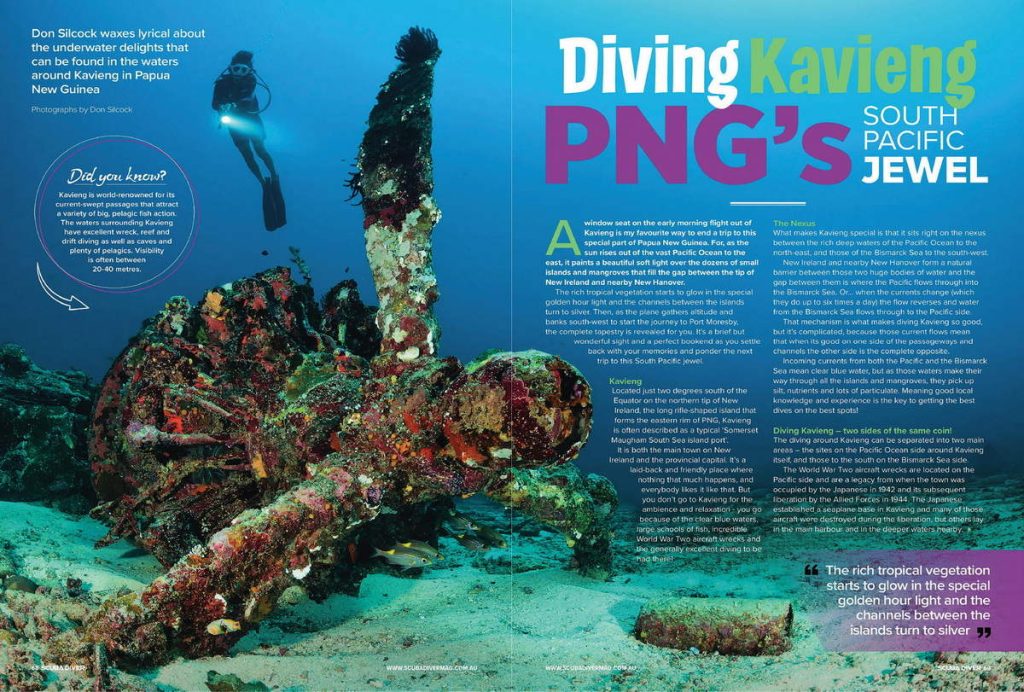
Diving Kavieng in PNG… A window seat on the early morning flight out of Kavieng is the go. It’s my favourite way to end a trip to this special part of Papua New Guinea. For, as the sun rises out of the vast Pacific Ocean to the east. It paints a beautiful soft light over the dozens of small islands and mangroves that fill the gap between the tip of New Ireland and nearby New Hanover.
The rich tropical vegetation starts to glow in the special golden hour light. And the channels between the islands turn to silver. Then, as the plane gathers altitude and banks south-west to start the journey to Port Moresby, the complete tapestry is revealed for you. It’s a brief but wonderful sight. And a perfect bookend as you settle back with your memories and ponder the next trip to this South Pacific jewel.
Kavieng
The town of Kavieng is located just two degrees south of the Equator. On the northern tip of New Ireland. The long rifle-shaped island that forms the eastern rim of Papua New Guinea.
Kavieng is often described as a typical “Somerset Maugham South Sea island port”. It is both the main town on New Ireland and the provincial capital.
It’s a laid back and friendly place where nothing that much happens, And everybody likes it like that…
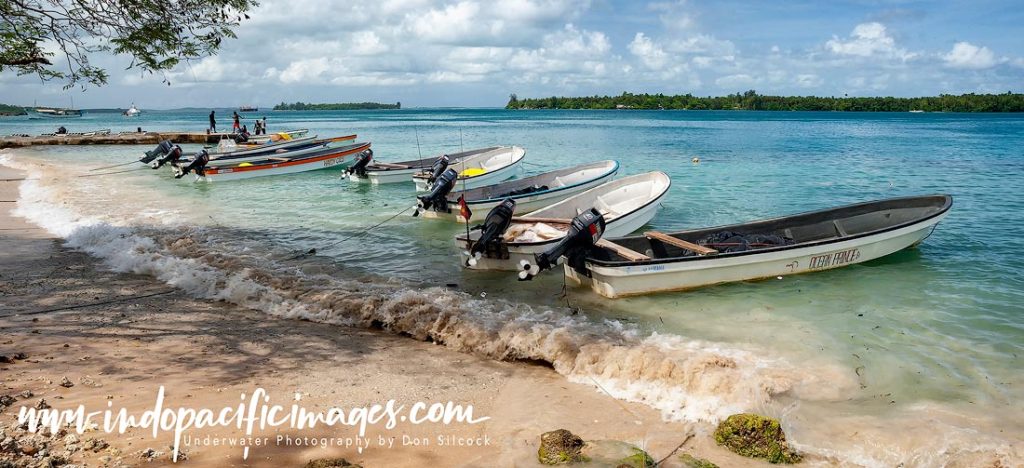
But you don’t go to Kavieng for the ambience and relaxation… You go because of the clear blue waters and large schools of fish. Together with incredible WWII aircraft wrecks and the generally excellent diving to be had there!
Diving Kavieng in PNG – The Nexus…
What makes Kavieng special is it’s unique location. Right on the nexus between the rich deep waters of the Pacific Ocean to the north-east. And those of the Bismarck Sea to the south-west.
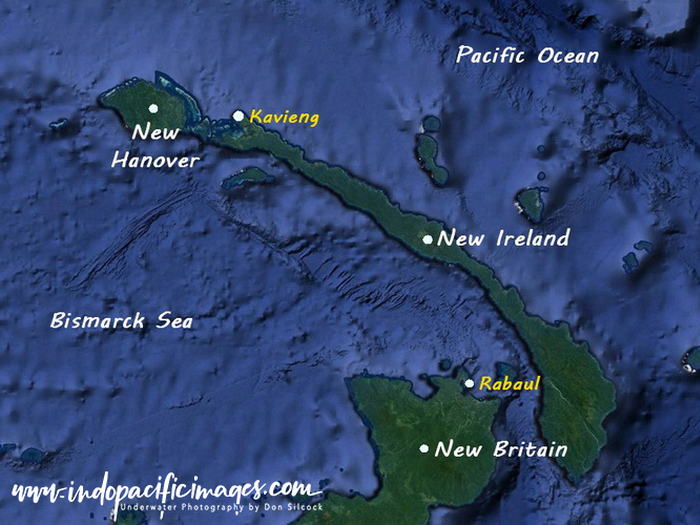
New Ireland and nearby New Hanover form a natural barrier between those two huge bodies of water.
And the gap between them is where the Pacific flows through into the Bismarck Sea.
Or… when the currents change (which they do up to six times a day). The flow reverses and water from the Bismarck Sea flows through to the Pacific side.
That mechanism is what makes diving Kavieng so good. But it’s complicated.
Because it means that when its good on one side of the passageways and channels the other side is the complete opposite.
Incoming currents from both the Pacific and the Bismarck Sea mean clear blue water.
But as those waters make their way through all the islands and mangroves, they pick up silt, nutrients and lots of particulate. Meaning good local knowledge and experience is the key to getting the best dives on the best spots!
Diving Kavieng in PNG – Two Sides of the Same Coin!
The diving around Kavieng can be separated into two main area. The sites on the Pacific Ocean side around Kavieng itself. And those to the south on the Bismarck Sea side.
The WWII aircraft wrecks are located on the Pacific side. They are a legacy from when the town was occupied by the Japanese in 1942 and its subsequent liberation by the Allied Forces in 1944.
The Japanese had established a seaplane base in Kavieng. And while many of those aircraft were destroyed during the liberation. Others lay in the main harbour and in the deeper waters nearby.
There is also the wreck of an Australian PBY Catalina seaplane.
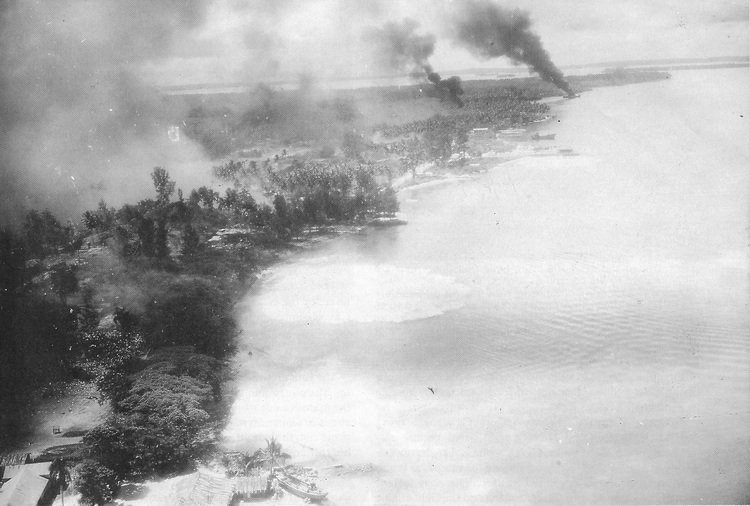
And the Der Yang Taiwanese fishing boat that was scuttled after being caught fishing illegally. While on the Bismarck Sea side of the main channel are numerous excellent reef and wall dives. Including the area’s “signature site” Albatross Passage.
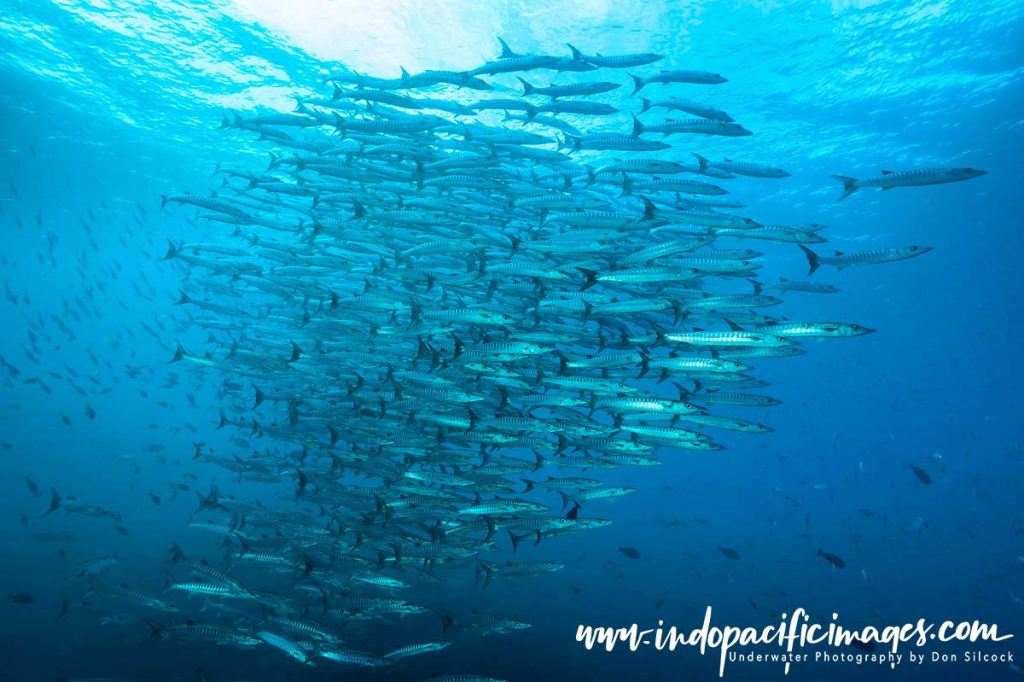
Diving Kavieng in PNG – Three for the Bucket List…
Simply stated, there are a lot of good dive sites in the Kavieng area. But three of them really stand out and make it on to my personal “bucket list”:
The Deep Pete Wreck
Located on the western side of Nusa Lik (small Nusa) Island in 40m of often crystal-clear water is the wreck of a Mitsubishi F1M floatplane. The depth explains the “Deep” part of its name.
And we can thank the WWII Allied Forces for the “Pete” part… During the war in the Pacific allied servicemen often struggled to understand and pronounce the names the Japanese used for their aircraft.
So they used code-names instead. With men’s names given to fighter aircraft. Women’s names to bombers and transport planes. Bird names to gliders and tree names to trainer aircraft.
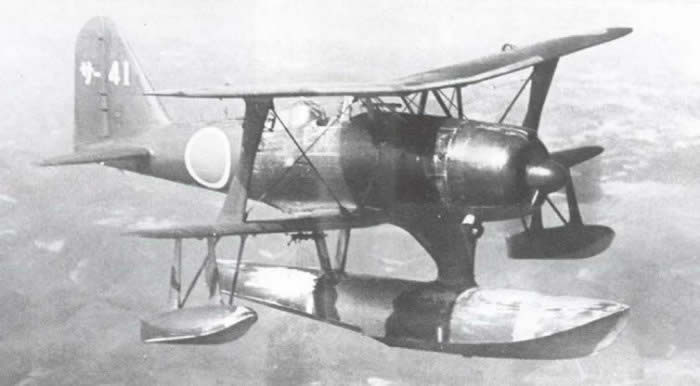
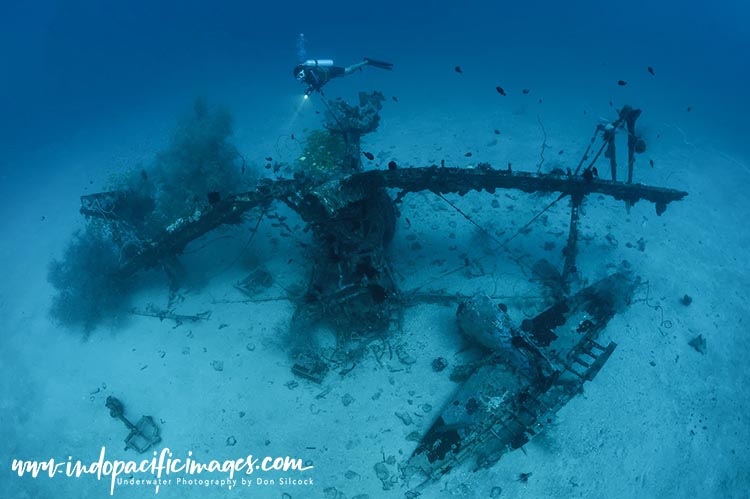
The F1M was a biplane, with a single large central float and stabilizing floats at each end of the lower wing.
Early versions of it suffered from poor directional stability in flight.
They were also known to ‘porpoise’ when on the water – which may explain why the wreck is there…
Deep Pete lies upside down on its back on flat white sand, with what remains of its main float sticking up.
Although its tail is broken, its biplane shape is remarkably intact given the relatively lightweight and fragile nature of the aircraft.
What makes the wreck so photogenic are the resident school of yellow sweetlips that stream in and around the wings. Plus the batfish and barracuda that patrol in the clear blue waters above the wreck.
At just under 10m feet long and with a wingspan of 11m Deep Pete is not a big wreck. But given its depth and the square profile of the dive, there is rarely enough time to fully explore it. You can use this link to read more about Deep Pete.
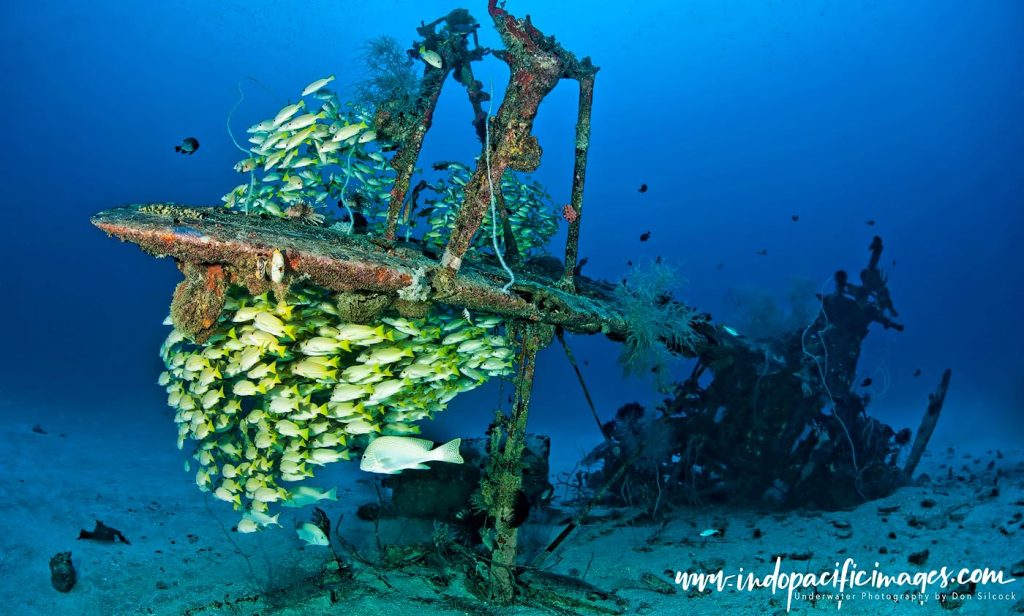
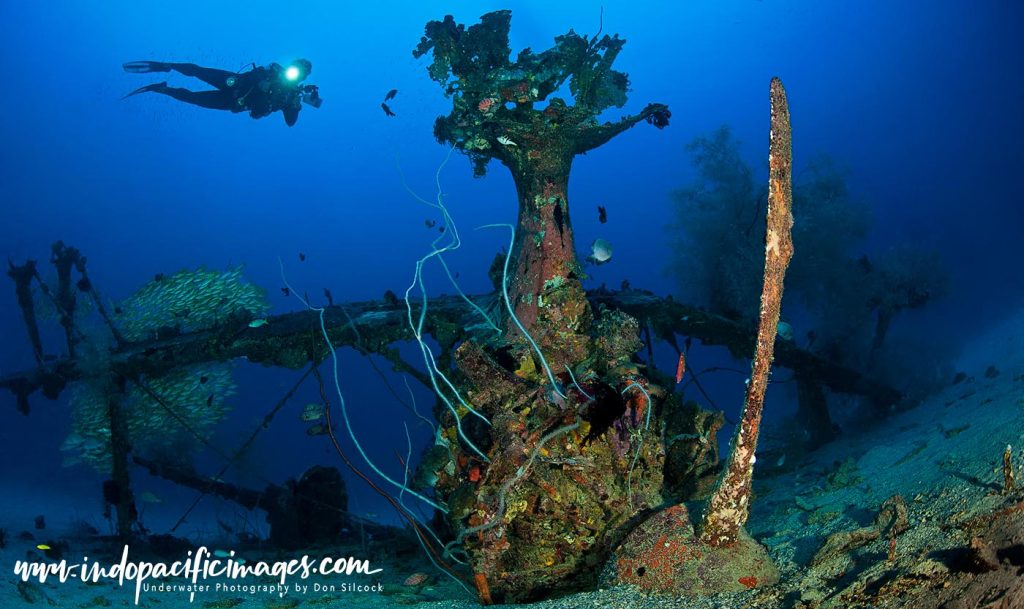
Albatross Passage
Named after the gunship that subdued the local population and establish German colonial rule in in the late 1800’s. Albatross Passage is a channel between the tip of New Ireland and Baudisson Island.
Albatross and the nearby Steffen Strait shipping channel are the main passageways between New Ireland and New Hanover. Which means they feel the full force of those tidal and current flows.
Dive Albatross Passage on an outgoing tide and you will wonder why you even bothered…
But return on an incoming tide as clear waters from the Bismarck Sea sweep the site clean of detritus from the islands and mangroves and you will understand why it rates so highly!
It’s a big site, shaped like a large semi-circular amphitheatre facing out into the Bismarck Sea. The walls of which slope down in terraces into the depths.
The upper terrace, below the ledge that forms the actual passage, is where most of the action is. It descends to a sandy plateau at 30m where something happening, whichever direction you look…
The terrace wall is richly coated in a superb mixture of hard and soft corals, black coral trees and huge gorgonian fans which host a tremendous variety of reef fish and creatures.
In the central area there is a large school of very photogenic yellow-tailed snappers. Which if you approach carefully will let you get take a group photo!
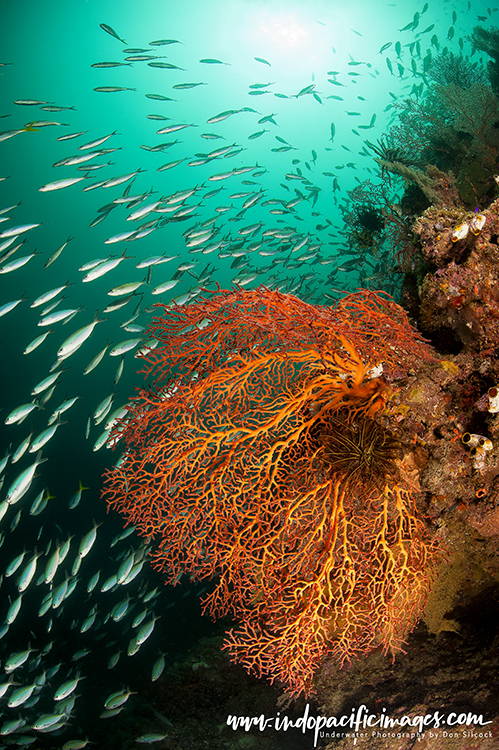
Cruising in the blue water you will see numerous reef sharks on almost every dive and often there will be large dog-tooth tuna, schooling barracuda plus mobula and eagle rays. You would need dozens of dives to fully appreciate Albatross as it’s such a special site! You can use this link to read more about Albatross Passage.
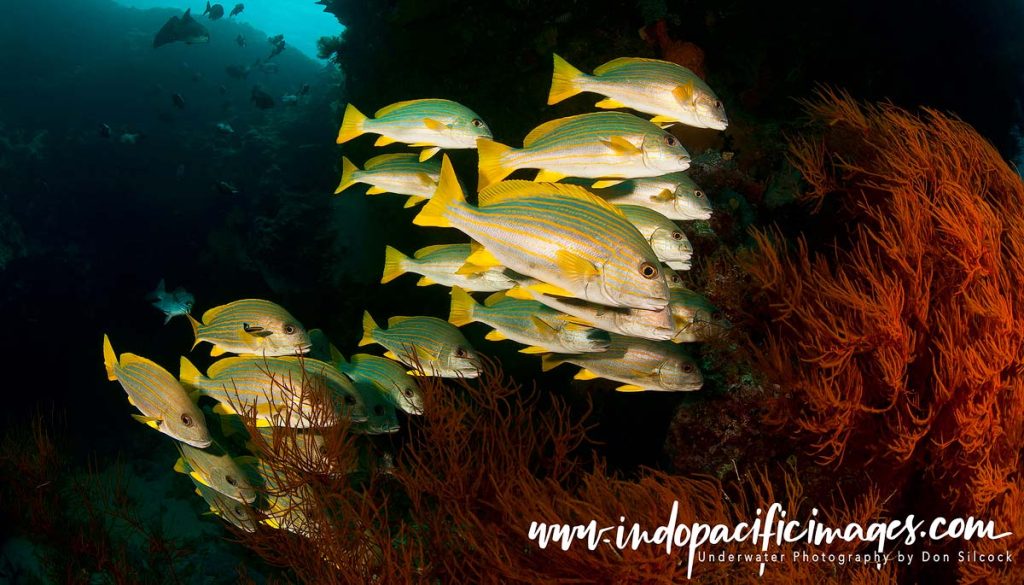
Cathy’s Eels
The third site is actually not a dive site at all, well unless you class being partially submerged in a shallow stream as a dive.
But it certainly is quite special and a place you will not forget quickly, particularly if you are taking underwater photographs!
“Cathy” was Cathy Hiob, a former Air Nuigini air hostess who retired back to her village of Laraibina, some 90 km down the east coast from Kavieng.
Her 22 years of flying with the national carrier gave Cathy a string of one-liners she loved using with the visitors who came to the village to see the “show”.
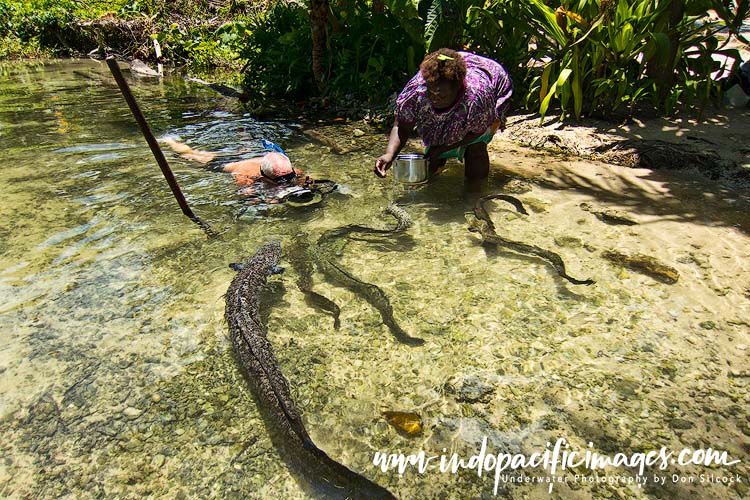
Cathy realised that the 10-12 large fresh-water eels that inhabit the local stream at Laraibina were a potential tourist attraction. So, she trained them on a diet of Besta tinned mackerel and the sound of the feeding pot being rattled will quickly bring the eels out from the mangroves!
Most tourists are (somewhat nervously…) content to let the eels swim around their feet, but full immersion therapy is the way to go and the trick is to try and get the eels to approach your dome port for their Besta!
Cathy passed away a few years ago and is greatly missed. As she was a wonderful, feisty woman, but her trusty assistant and chief feeder has stepped up to take the role. So the show goes on you can use this link to read more about Cathy’s Eels.
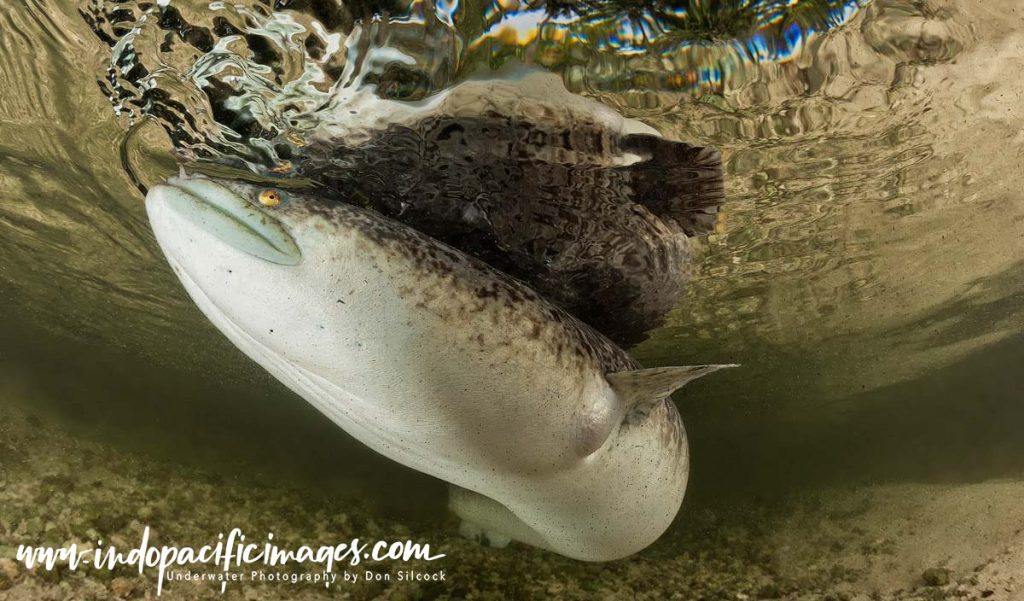
How to Dive Kavieng
There are two land-based options to dive the Kavieng area – Lissenung Island Resort and Scuba Ventures.
Both are great operators and know the area and its sites very well. All my personal experience of Kavieng has been with Lissenung, which is a small island about a 25-minute boat ride from Kavieng. It’s location is ideal because it allows quick access to the dive sites on either the Pacific side, or on the Bismarck Sea.
Lissenung is run by Dietmar Amon and his wife Ange. Dietmar came to PNG in 1996 in search of adventure and to escape the cold of his native Austria. But ended up buying an island – as you do…
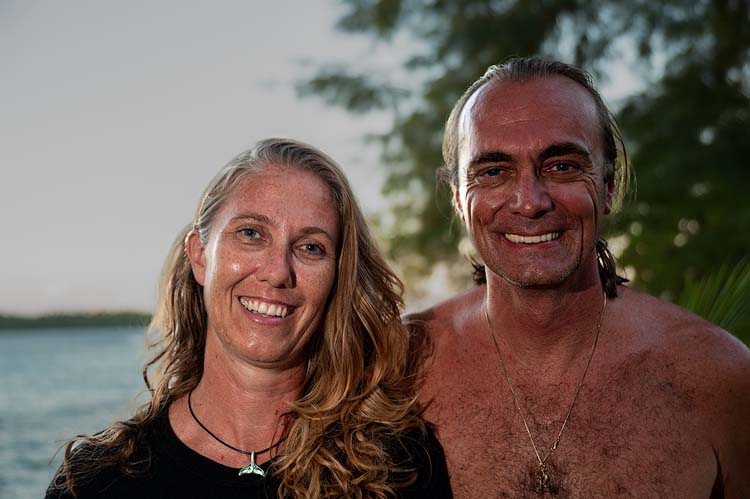
He basically lived under the stars while building the accommodation, main lodge and establishing 24-hour power and running water. In between he searched for and surveyed all the sites and wrecks. I like my adventure in large servings… But when I talk to people like Dietmar I always feel like I have lived a sheltered life!
Ange arrived in 2005 and brought many really nice touches to the resort. Between them they run a really good operation that also puts a tremendous amount back in to the local community. Almost all of their staff are recruited from nearby Enuk Island and have been personally trained by Dietmar and Ange.
Plus, they also privately fund and run a highly active turtle conservation project from Lissenung Island. Which involves meticulously moving newly laid eggs to safe havens so they can hatch in safety.
New Ireland – How to get There
Port Moresby is the only international gateway into PNG and is well served by Air Nuigini and Qantas from Brisbane and Cairns.
Kavieng (KVG) is New Ireland’s regional airport and is served by Air Nuigini from Port Moresby. Organized carefully it is possible to leave Brisbane mid-morning, transit through Port Moresby and arrive at Kavieng’s new airport as the sun starts to set!

Diving Kavieng in PNG – In Summary…
PNG is a country that offers many options for incredible scuba diving. But Kavieng really is quite special and offers an almost unique smorgasbord of special things to see.
Those clear blue waters, large schools of fish, incredible WWII aircraft wrecks, excellent reefs and coral gardens plus a great assortment of drift and muck diving are really hard to beat.
Add in the South Pacific ambience of Kavieng, The unique local Malagan, Kabai and Tumbuan cultures plus the charm of staying on a small private island and it’s easy to understand why Kavieng gets so many repeat visitors!
Scuba Diving ANZ Diving Kavieng Article
Scuba Diver ANZ have published a five-page article of mine on Diving Kavieng in PNG and you can use the link download a copy.
